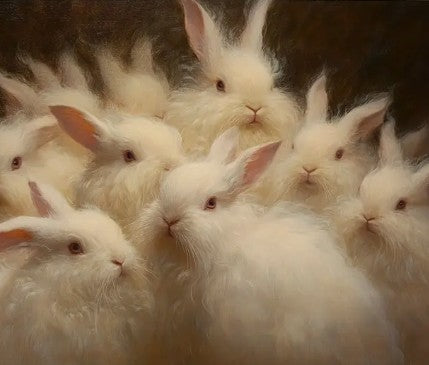
What the Hell is Mink-Cashmere?
Share
Mink-Cashmere doesn't actually exist. Despite shoddy websites promoting an expertise in producing mink-cashmere yarns using fibers from the bellies of the non-existent "mink-cashmere" goats,
Several years ago, suppliers from the far east were offering me mink-cashmere sweaters. So, my being a connoisseur of sweaters, I naturally began asking...
- What's the percentage of mink vs. cashmere?
- How are mink fibers harvested?
- Mink fibers are too short to be used for making yarns, which is why mink are usually raised and harvested for their pelts and the making of fur products.
- How would the two dissimilar fibers be blended into one yarn?
I let these suppliers know up-front, I have my yarns lab tested before going into production. Thus, I know beforehand what the percent of fiber content is (animal vs. synthetic) and separate testing showing from which animal species they originated.
All I got was silence.
"Send me some mink-sweater samples or yarn samples so I can have them tested," I urged them. No... they didn't want to do that. Now I know why.
Several years ago, a clearly psychotic farm worker in China was recorded as he viscously ripped clumps of fur from small rabbits with his hands, leaving the severely traumatized, hairless, pink-skinned bunnies shivering in their cages. The world was outraged, and rightfully so.
Major clothing brands around the globe immediately dropped all angora products from their catalogs. Their customers weren't going to buy it and those companies needed time to investigate the sourcing of angora used in any future products.
Angora farmers in the far east suddenly found themselves with no customers, so they rebranded angora as "mink-cashmere." One company went so far as to describe their yarn as being made from the supposed exotic mink-cashmere goat. Imagine trying to crossbreed mink with goats.
